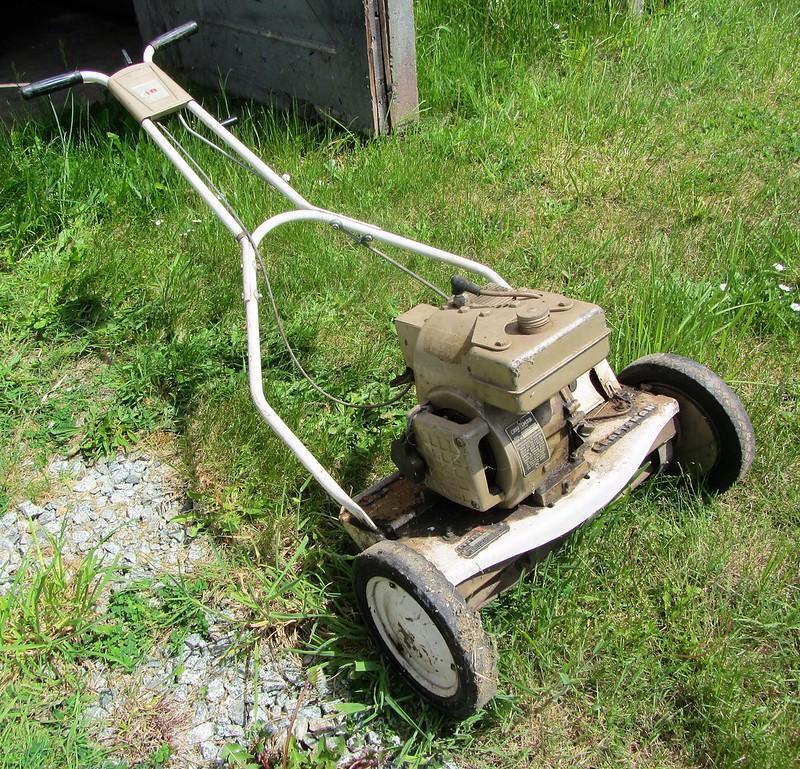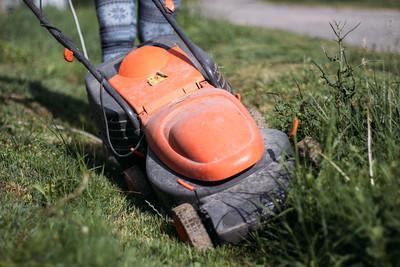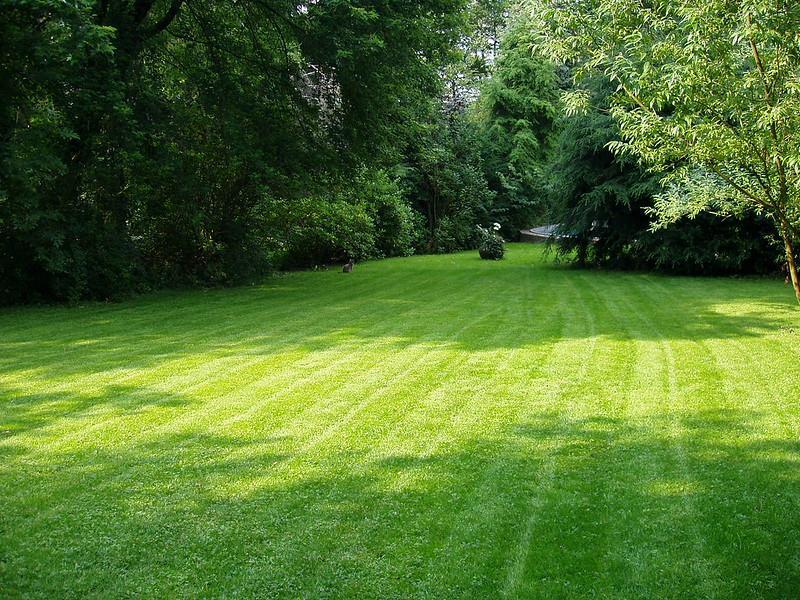Mowing is an essential part of lawn care. It keeps your lawn looking great, makes the grass healthy and strong, and keeps many lawn weeds and pests out. However, there is an issue. People generally are not excited about mowing their lawns. It is because mowing is quite a tedious and boring task that takes a lot of time.That is where lawn mowers come in. Lawn mowers intend to make cutting the grass easier and save you a lot of time. And when choosing a lawn mower, you will probably have to decide between a standard push mower vs self-propelled mower. It is unless you are dead set on getting a riding lawn mower.

When choosing a mower, it is essential that you consider the size of your yard, its terrain, and the amount of time you are willing to spend maintaining your lawn. In general, push mowers are better suited for smaller lawns that are also flat. In comparison, self-propelled mowers are best suited for yards that are medium to big in size and have a hilly or sloped terrain.
That said, there is much more to choosing a lawn mower than just lawn size and terrain. Keep reading to find out!
Background | Push Mower Vs. Self-Propelled

It is essential to understand precisely what a “push mower” is and what a “self-propelled mower” is before we start comparing them. There are multiple variations of each, in addition to an overwhelming number of available options.
For instance, you could pick either a cylinder blade or a rotary blade. Then you can either choose a gas mower or an electric one. And if that was not enough, there are manual and electric start mowers. See what I mean?
So, let’s learn a few basics about both types before we go any further.
Push Mower
Despite the fact that many people think of a traditional reel mower when the term “push mower” comes up, there are quite a few different types of lawn mowers that can be put into the category of push mowers. The term “push mower” refers to any mower that requires the operator to walk behind the machine and push it. Below is an overview of some of the most common types of push mowers.
Gas Push Mowers

Of all the push mowers in this list, gas push mowers have the most power. However, there are some drawbacks to that. They are heavy, and pushing gas lawn mowers is quite tricky. Moreover, they are expensive and challenging to maintain. Nonetheless, gas push mowers are probably the best choice if you frequently cut longer and thicker grass.
Manual Reel Push Mowers

These mowers neither have a motor nor an engine. Their cutting blades are contained within a cylinder that rotates as you move the mower back and forth. They are typically the least expensive form of push mowers due to their simple build and simplistic nature.
Electric Push Mowers

When it comes to push mowers, electric push mowers are regarded as the “next level up.” They are easy to carry, and you can get them in variants that are either corded (powered by the main supply) or cordless (powered by a battery). Electric push mowers do not use a cylinder blade but instead have a rotary cutting blade inside.
The power source is the primary distinction between these three forms of the push mower mentioned above. Your personal preferences, the type of lawn you have, and the lawn size will all play a role in determining the sort of mower that will work best for you.
RELATED: Starting A Lawn Mower That Has Been Sitting For Years | A Complete Guide
Self-Propelled Mowers
It should be evident from the name that you do not need to push a self-propelled lawn mower. It propels itself. Self-propelled mowers come equipped with a transmission that rotates the mower blades and, at the same time, propels the lawn mower. You are only responsible for directing its course. Similar to push mowers, there are a few distinct types of self-propelled mowers that are described in detail below.
Front-Wheel Drive Lawn Mowers

As the name suggests, front-wheel mowers are propelled by the front wheels. Compared to other self-propelled mowers, they are less expensive and have simpler mechanics.
Moreover, front-wheel mowers are easy to maneuver, making them ideal for lawns with plenty of bushes and ornamental beds. However, front-wheel mowers are far from perfect.
They are unsuitable for sloped lawns as they cannot pull their weight on steep inclines.
Rear-Wheel Drive Lawn Mowers

The same basic idea as front-wheel self-propelled push mowers applies here, but instead of being powered by the front wheels, the back wheels are pushing the mower.
They tend to cost a little bit more than the front-wheel drive mowers because the engineering design required to make the rear-wheel-drive possible is more complex.
However, they support more of the mower’s weight and are quite helpful on sloped yards.
Comparison | Self-Propelled Vs. Push Mower
Now that you’re familiar with the various types of mowers that fit into each category let’s take this comparison between push mowers and self-propelled mowers to the next level.
We will do this by looking at the primary benefits offered by each type. And, you will see that push and self-propelled mowers are more different than you might have thought.
Pros/ Advantages Of Self-Propelled Mowers

Self-Propelled Mowers Are Faster
If you have a large area of grass to trim, cutting it with a push mower will take an eternity. Even more so if it is a push mower that is manually operated. So, when mowing large areas, a self-propelled mower is significantly better and faster.
I’d go so far as to suggest that you can virtually finish mowing a large yard in half the time if you use the right equipment. Also, if you are someone who does not like mowing, you’ll probably find these self-propelled mowers quite appealing.
Self-Propelled Mowers Work Better On Slopes
Try pushing a big, hefty gas lawn mower up and down a hill in the brutal heat of summer. It’s awful! With a self-propelled mower, that same situation is entirely different. There won’t be any sweat, gasping for air as you fight uphill, or post-workout aches and pains.
The mower puts in the long hours and simplifies dealing with difficult situations for you.
Self-Propelled Mowers Are Easier On Body
It can be taxing and stressful on your body to push a mower up and down your lawn while carrying its total weight. By handling that weight on your behalf, a self-propelled mower removes that pressure from your body.
You will only feel the weight of the mower when turning. Otherwise, moving is considerably simpler and a piece of cake.
Pros/Advantages of Push Mowers

Push Mowers Are Affordable
Although certain types of push mowers are more expensive than some self-propelled mowers, typically, push mowers are much less costly. For instance, you get a reel push mower for as little as $80. In addition, several gas push mowers are also quite inexpensive.
Push Mowers Have Lower Fuel Costs
A push mower will almost always be less expensive to operate in terms of fuel expenses when compared to a self-propelled mower. Self-propelled mowers require more energy since they are heavier, which puts more stress on the engine.
On the other hand, push mowers can be very affordable in terms of fuel or even free (like reel mowers). Even when using battery or gas power, push mowers typically end up being less expensive to operate.
Push Mowers Last Long
The self-propulsion mechanism is merely one component of the self-propelled mower that, over its lifetime, can malfunction. However, in the case of push mowers, there is a lower chance of something going wrong because of their simple design.
Push Mowers Are Lightweight
The additional hardware that is required to provide a mower with the ability to propel itself adds a substantial amount of extra weight. In comparison, push mowers are typically relatively light, especially the reel mowers.
Self-Propelled Vs. Push Mower | Which Should You Choose?
Now that you know the various types of push and self-propelled mowers and their distinct features. Let’s examine some key elements that could influence your decision.
The Budget

A push mower is obviously the best choice if you are on a budget. You can get a reel push mower for as little as $80 to $100 on Amazon. Even if you want a push mower with corded electric power, it will cost between $100 to $200. So if cost is your primary consideration, then a push mower is the best option.
On the other hand, if your budget is flexible and you’re only concerned with finding the greatest mower, you should get a self-propelled mower. It will save you a lot of time and hassle unless you have a really tiny lawn. (then, it’s just a waste!)
Size Of The Yard

Lawns come in many sizes, and the qualities you should look for in a lawn mower also vary greatly depending on the lawn size. Small lawns can be perfectly mowed with a push mower, and 99 times out of 100, a self-propelled mower on a small yard is an overkill.
I mean, spending a fortune on a lawn that can be cut easily in 10 or 20 minutes just doesn’t make sense. However, if the task at hand requires more time, a self-propelled mower can be a better option worth exploring in case money is not an issue.
Lawn Terrain

Self-propelled lawn mowers are the best choice when you are dealing with steep slopes, hills, or any other type of upward gradient while cutting the grass. However, make sure you get a self-propelled mower with rear-wheel drive.
The mower’s weight is just too much for a front-wheel-drive mower to handle when it comes to cutting grass on slopes. On the other hand, if you have a flat lawn, a push mower will do just fine, given that you are in good health.
RELATED: How To Fix Lawn Mower Sputtering: Common Reasons & Easy Fixes!
Conclusion | Self-Propelled Vs. Push Mower
When choosing the best between a self-propelled and a manual lawn mower, there is no single response that can be deemed “correct.” Knowing exactly what you need from a mower is, in my opinion, the single most critical element when purchasing a lawn mower. Obviously, the budget for some comes first!
Nonetheless, here is a quick cheat sheet to help you determine what type of mower you should buy, depending on your needs and personal preferences.
| Self-Propelled Mower | Rear-Wheel Drive | Medium Lawn with Steep Slopes |
|---|---|---|
| Large Lawn with Steep Slopes | ||
| Front or Rear-Wheel Drive | Large, Flat Lawn | |
| Large, Uneven Lawn | ||
| Push Mower | Corded Electric | Small, Uneven Lawn |
| Reel or Corded Electric | Small, Flat Lawn (Standard City Lawns) | |
| Corded or Cordless Electric | Small Lawn with Steep Slopes | |
| Self-Propelled (Front-Wheel Drive) | SMedium, Flat Lawn | |
| Push Mower (Gas or Cordless Electric) | ||
| Self-Propelled (Front-Wheel Drive) | Medium, Uneven Lawn | |
| Push Mower (Gas or Cordless Electric) |
Frequently Asked Questions (FAQs)
Do I really need a self-propelled lawn mower?
If you have to cut grass in a large area, you’ll save time and effort by using self-propelled mowers. With a self-propelled mower, you can easily cut through thick grass without extra effort. However, if your lawn is really tiny, a self-propelled mower is overkill.
Is a walk-behind mower self-propelled?
Walk-behind mowers come in two forms: self-propelled and push. You can choose any of the two depending on your preference and needs. However, if you need to mow a steep lawn, definitely go for a self-propelled lawn mower.
How fast do self-propelled mowers go?
If you are trying to beat a Tesla, you most definitely can’t do that with a lawn mower. Jokes aside, depending on whether it is a one-speed or variable-speed model, self-propelled mowers typically operate at speeds of 3–3.5 miles per hour.
Sources For Further Reading
Choose a lawn mower to fit your needs – The Oregon State University Extension Service
Mowers and mowing safety – University of Minnesota Yard & Garden Extension
The 10 Steps of Lawn Mower Maintenance – Alabama A&M University Cooperative Extension
Editor’s Recommendations
How To Make Bermuda Grass Thicker, Greener, and Fuller | A Beginners Guide
The Best Lawn Care Schedule For Northeast | A Comprehensive Guide
The Best Organic Fertilizers For Home Lawns For A Greener & Healthier Yard







